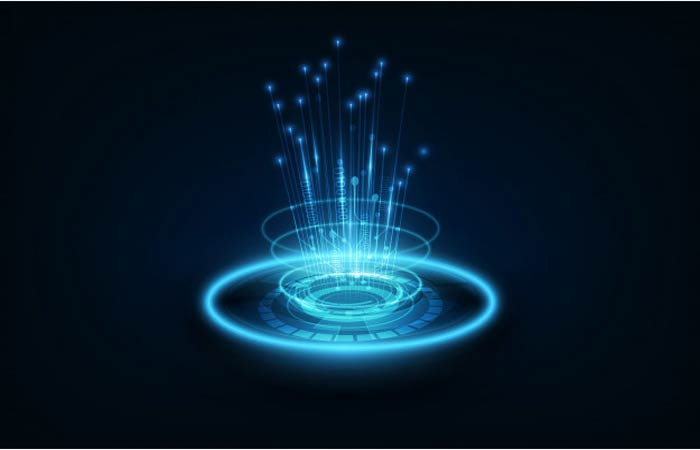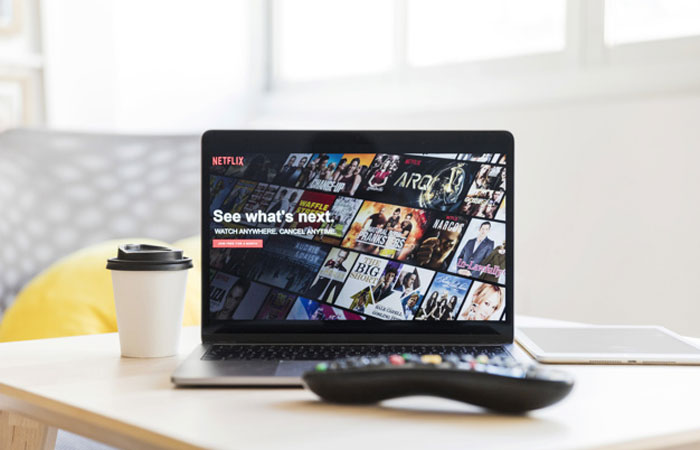What is Fiber Internet? Let’s Get an Explanation
At last, the time has arrived when fiber internet is going standard in the US. We regularly talk about smartphones and smart devices. Consider everything; nothing can be intelligent without the internet. Furthermore, with expanding data burdens and amounts, traditional broadband associations will before long turn into a significant limit. We are happy to see fiber internet connection become an everyday reality in 2018. Significant specialist co-ops have just set out their infrastructure and are almost there to go live this year. We should comprehend this innovation and why you should be excited about the next chapter in broadband networks?
What Is Optical Fiber Internet?
Optical fiber uses light rather than electricity to provide a signal. For a long time, we have depended on copper links to provide signals. While copper links are capable of high data transfer capacity, they can only do a brief distance. A couple of hundred meters and copper links begin to decrease their transmission capacity. Optical fiber links include deliberately positioned glass pieces that mirror light and subsequently convey a potentially limitless amount of bandwidth across infinite distances.
Main advantages of fiber internet connectivity:
1. Distance
The significant advantage of a fiber broadband network must be the consistency of delivering fast data over large distances. Traditional copper cables begin to degrade their data transfer limit when 100 meters. Copper cables can deliver high-speed data, but the fact that they can’t keep up the speed over longer distances makes optical fiber an easy decision as a commendable update.
2. Faster Internet Speed
Innovation around us is developing, and it is developing super fast. The present broadband connection is quick; however, they will before long bottleneck future requests. 4K video is multiple times the goal of 1080p video, and 8K is great multiple times! Today, 4K TVs are standard, and streaming services offer UHD (4K) content.
3. Future-verification
Video streaming features are changing how we see our TV. We see substance at higher goals and in immersive audio codecs and HDR video because of better innovation. Cloud computing is also on the rise, as is cloud-based gaming. Online games are standard gaming decisions today. By and large, our present and future diversion needs are generally based on the internet. Fibre internet will guarantee future consistency with fats data speed over infinite distances.
4. Affordable Internet Speed
Copper cables now exist and are being supplanted by fiber-internet cables by many network providers as you read this. With the enormous competition in the broadband service provider space, fiber optic broadband will cost like our current broadband connection, if not excessively high. No major substitutions are needed by the provider, separated from methods for channelizing internet service. Get ready to access at an affordable cost.
The kinds of fiber connection you should know:
5. FTTB (Fiber to the building/business/basement)
Fiber to the building is when the fiber optic cable reaches your building and is then distributed further. This allows users with existing broadband connections to use their existing cables from the distribution point. Not only that, but group connections could also make the service a tad bit affordable than FTTH.
6. FTTH
As the name suggests, the optical fiber cable extends outright to the user’s home. This is the type of service most of us will use. If you have a CAT 5 or CAT 6 switch, your internet service provider may give you a chance to change over a fiber-optic network. In this way, allowing you to keep your current internet router and still experience great speed.
In any case, change is the only consistent, and you should update your router to one that can take a direct fiber internet connection and handle gigabyte paces of the upcoming future.
7. FTTB (Fiber to the structure/business/cellar)
Fiber to the building is the point at which the fiber internet cable arrives at your building and is then disseminated further. This allows users with existing broadband connections to use their current cables from the delivery point. Not only that, but bunch connections could also make the help a tiny bit affordable than FTTH.
8. FTTO (Fiber to the workplace)
In this situation, the server is the one that gets fiber optic connectivity, and the connection is circulated to different PCs through various methods. This would be a business line with conceivably boundless abilities and is intended to upgrade profitability.
Learn Also: How to Get Free (Low-Income) Internet for Low Income Families
What Are The Main Advantages Of Fiber For Internet Users?
Fibre internet is an incredible decision for high-bandwidth households where multiple users need to transfer video, play online games, back up data, or send and get enormous large files at the same time, exceptionally long distances.
A fiber-connected home can deliver an extraordinary encounter across all devices and internet connection systems, from home security to brilliant indoor regulators, broilers, fridges, and various machines.
With quicker rates, you additionally don’t get as much buffering with on-request streaming. “Buffering” alludes to the stacking time that happens when a video stops and needs to get up to speed. Fibre Internet from CenturyLink, for example, allows you to download a full-length 4K or HD film like a flash.
Overall, to download a huge media record (6.5 GB) by internet type:
- Dial-up
- 11 days
- DSL
- 1 – 14 hours
- Link
- 1 minute – 14 hours
- Fiber
- About 1 minute
How Does Fiber-optic Internet Work?
Fiber-optic internet is a complex technology that allows the transmission of data as light as opposed to power. Numerous pieces make up this advanced technology, but two key segments are optical fiber and the so-called “last mile” of the fiber-optic network.
1. Optical fibers
Optical fibers are tiny — around 125 microns in diameter or marginally more prominent than a human hair. Many of these strands are packaged together to form cables (not to be mistaken for coaxial cable, which is made of copper). The optical filaments deliver laser or LED light beats down the line, sending data in “binary” form, like the 0s and 1s used in the electronics.
2. The last mile
When these super-quick beats of light arrive at their objective, they are changed over into electrical yield that your device can comprehend and use. This is performed by an extraordinary piece of gear called the optical network terminal, which imparts the signal through an Ethernet connection with the user. The stretch between the principle fiber network line and the end-user is alluded to as the “last mile” (however, it is frequently a lot more limited than a mile).
“Pure “fiber alludes to fiber connection that runs right to the end-users home, business, or work station. This is the quickest and generally costly “last mile” option, as it brings the max throttle and unwavering quality of fiber directly to the purchaser.
As another option, copper links are frequently used to deliver the fiber connection from a terminal called a “street cabinet” to an entire lodging block, grounds, or residential building. This option is more affordable. However, a modest quantity of fiber speed is lost in the “last mile.”
3. A 2-minute history of fiber optics
Though many individuals consider fiber-optic another innovation, it traces back to the 1970s, when it was first used in quite a while.
In 1988, fiber-optic cables were laid underneath the sea, interfacing the U.S. to Europe. Throughout the long term, an ever-increasing number of lines were laid under the ocean, so today, a massive network of fiber-optic links extends worldwide. With their rapid capacities and solid transmission of data, developing fiber networks have allowed for dramatic progress in the telecom field. Indeed, some say fiber-optic innovation is the thing that made the Information Age conceivable.
In the developed nations, fiber-optic lines supplanted the more established copper lines years prior, framing the center or “spine” of our present internet networks. As of late, has it gotten savvier to introduce fiber lines than copper ones? Along these lines, as the innovation continues improving, fiber-optic networks are extending quickly across urban areas.
How is fiber unique from different types of internet?
The primary contrast is that fiber doesn’t use electric flow like different types of internet connection do. It uses light, delivered through the fiberglass center.
Internet innovation has developed significantly over the long haul. Here is a summary of the types of connection that is as yet used and how they work:
1. Dial-up internet
Dial-up, which is more uncommon than 20 years before, uses existing phone lines, typically made of copper. Dial-up uses the audible frequency of the landline, which is why you hear a series of beeps and noises when it connects. Also, you can’t use the phone and the internet simultaneously because they share a similar line.
The average speed of dial-up internet is around 56 Kbps (about 0.05 Mbps) for downloading and transferring.
2. DSL internet
DSL (Digital Subscriber Line) internet also uses phone lines to send data. Yet, as opposed to dial-up, DSL uses quiet frequencies, so it doesn’t contend with your voice telephone service.
Regular rates for DSL are somewhere in the range of 1 and 100 Mbps for downloading and up to 20 Mbps for transferring.
3. DSL Cable
DSL utilizes a standard telephone rope for the internet (presented above left), while fiber utilizes an Ethernet link (on the right).
4. Cable Network
Cable networks use a similar line (or possibly the same type of line) that your satellite TV service uses, known as “coaxial link.”
Related article to learn more:
- How to Get WiFi at Home without Cable
- AT&T Business Internet Review: Plans and Pricing
- How to Get High Speed Internet without Contract
- Top 10 Best Business Phone and Internet Providers
Is fiber internet faster?
Faster internet connection sends data at various rates. In addition to being faster, fiber is broadly viewed as more dependable and is an excellent decision for remote workers, gamers, multi-client family units, and businesses.
“Your Company Name” service can deliver even download/transfer speed of up to 940 Megabits each second (Mbps) over a wired connection with your router.
In contemplating speed, you can’t overlook the effect of WiFi. The regular connection speed you experience can be limited by the use of wireless technology, which will, in general, lose signal strength (which means diminished transfer speed) when contrasted with the wired connection that enters your router.





![The 10 Best Cheap Internet Providers in Mesa, AZ [Arizona]](https://ispfamily.com/wp-content/uploads/2019/11/internet-providers-in-mesa-az.jpg)


